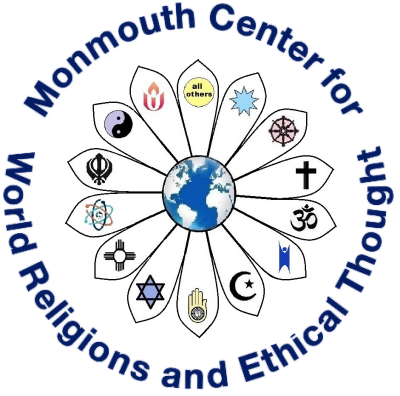By Robert Smith
“Not all who wander are lost.” Tolkien’s words remind me of my own journey, and maybe yours.
Individual spiritual journeys are an important focus of the Monmouth Center’s Mission. These investigations provide a rich opportunity to reflect on our many paths and voyages. In Thomas Merton’s view, “Our real journey in life is interior”.
A deep river flows through each of us, I think, and keeps nudging us along our true paths. Re-discovering our own wanderings, and those of others, is an enlightening experience.
STEPS IN THE JOURNEY

The Blue Ridge
The story begins in the Blue Ridge Mountains of Western North Carolina. As the son of a Methodist minister, I grew up in a series of Methodist “parsonages” in small mountain towns. Methodists are a Christian Protestant denomination that grew out of the Anglican Church in England in the 1700s. They were known to work methodically to develop methods for becoming more holy, so they were called Methodists. Ministers and their families were moved to a new church every four years to avoid becoming too enmeshed in a particular community. Each church provided a “parsonage” where the parson-minister, and his family lived.
Sprinkling: Two days before my first birthday, my father performed a water ritual Methodists called “christening” and then at age 12 another water sacrament we called “baptism”. In the Methodist church these water ceremonies were done through “sprinkling”, so my father dipped his hand in holy water and placed his hand on my head invoking the three names of our Trinitarian God: The Father, The Son and the Holy Ghost.
I remember being shocked to learn that the Baptists across town performed the ritual by actually putting people under water. Later I learned there were similar water sacraments used by Sikhs, Hindus and others.
Zen: By my mid-teens, religion had lost its meaning. Then in high school I discovered a book, Alan Watts’ The Way of Zen, that reshaped my mind and was a gateway into the alternate new world of Buddhist philosophy and the practice of meditation.
College: In college and graduate school I was drawn to the fields of human development and anthropology. I began to see how limited our understanding of human development was without the non-Western and Buddhist perspectives and methods of furthering spiritual development. I was chagrined to discover that not one of the authors cited in my psychological dissertation had a non-European name.
KOREA
Zen Master: When I was twenty-eight I became a graduate school professor of human development and then received an appointment as a visiting professor at Kyung Hee University in Seoul, Korea.
In Korea I studied with the great Zen Master, Venerable Seo, Kyung-Bo, in a transcendent red Buddhist temple, Jeonggakwon, built entirely on top of a huge boulder. He taught me how to meditate in a powerful way that I have continued to practice ever since. My teacher presented me with a scroll on which he had written four Chinese characters in the instantaneous Zen style. The characters read “Open doors bring 10,000 joys”.
Teaching: I returned from Korea in 1971, feeling that I had just learned more than I had in all of graduate school. I began to develop graduate school courses where I integrated these eastern ideas into the field of human development. I met Stevi who was the star graduate student in the program, and one thing led to another. We returned to Korea together on our sabbaticals with our four year old son, Ean.
Intercultural Relations: After fifteen years as tenured professors of human development, we were able to get buy-outs which provided us with the time to create The Project for Intercultural Development. We did some of the early work in the new field of intercultural relations by combining our work in human development with our learnings in East Asian. In the mid-1980s we began our intercultural consulting practice with Bell Laboratories which was in the process of transformation into a virtual United Nations of high level scientists and engineers.
Monmouth Center: Realizing the importance of interfaith understanding for world peace, I helped found the Monmouth Center in 1994. Board Members represented over a dozen of the great world religions.
Stress: Our consulting work became much busier but more stressful and less satisfying for me. The business seemed to crowd out the quiet space I needed.
CRISIS
A closer look: Life almost ended at fifty-three with a “massive” heart attack. After quadruple by-pass surgery, I began to look more closely at how I was living my life. All I wanted was a remote cabin in the woods and the time to think. I talked about my need for solitude at a Monmouth Center meeting.
Vision Quest: To mark my fifty-ninth birthday I went on a solo Vision Quest in the Utah desert. I began to gain a sense of direction in what I needed to do. When I returned to New Jersey I began to confront the difficulties in leading a life of silence and solitude in the midst of the hyperactivity of suburbia.
Solitude Project: At a Monmouth Center meeting in 2005 we talked about passion projects, and I began to see my quest for solitude as a major life project that addressed the Monmouth Center Mission to study individual spiritual practices. The Solitude Project was born, and Stevi and I began working together to figure out how to live a simpler life together in the midst of our busy surroundings. I began to focus more on nature and writing.
In The Solitude Project section of this website, there is more information about the Solitude Project and some recent writings that have grown from it.
RCS, June, 2010 robertcharlessmithphd@gmail.com

You must be logged in to post a comment.